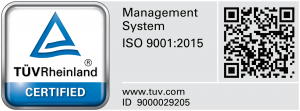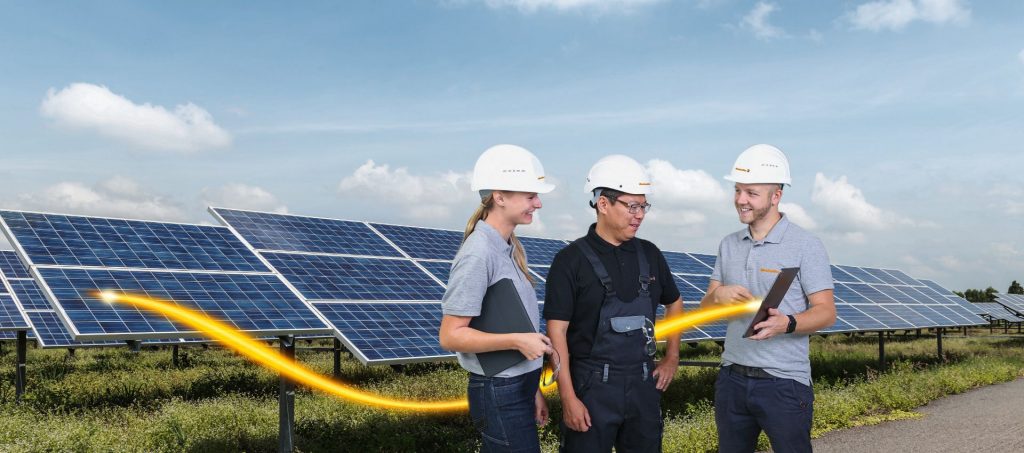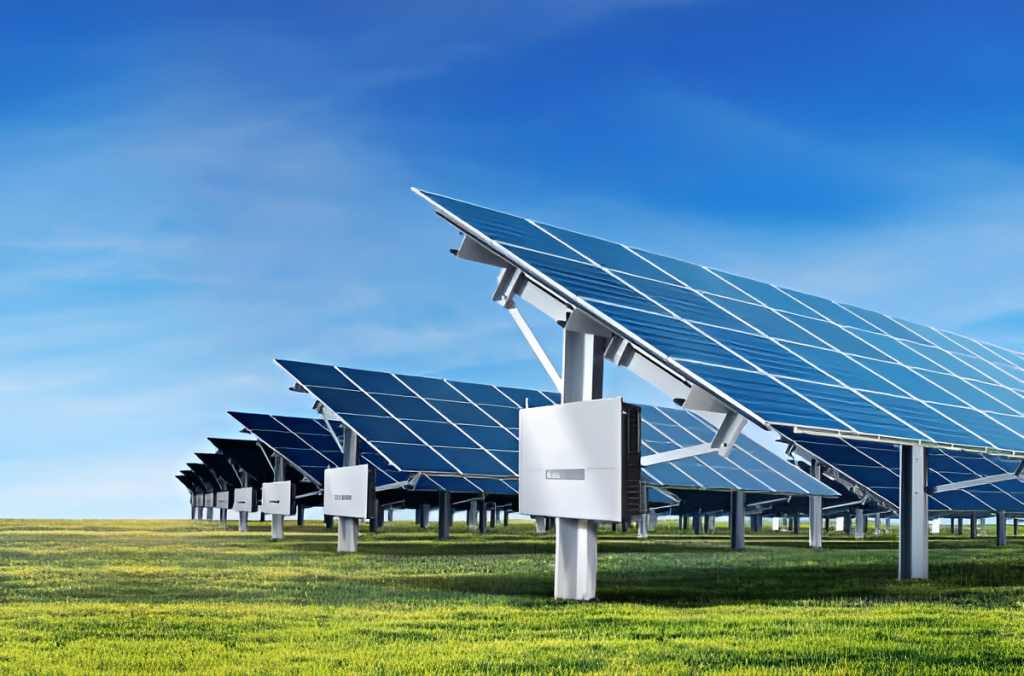


The Weidmüller PV String Monitoring System is designed to monitor photovoltaic (PV) strings in solar power plants. It allows for real-time monitoring of the performance and health of individual PV strings, which are interconnected solar panels within a solar array.
This PV string monitoring system typically includes sensors, communication devices, and software that collect data such as voltage, current, temperature, and other relevant parameters from each string. By analysing this data, operators can identify issues such as shading, module degradation, or malfunctioning components in specific strings. This allows for timely maintenance and optimization of the solar power plant's performance.
The Weidmüller PV String Monitoring System aims to enhance the efficiency, reliability, and safety of solar power installations by providing comprehensive insights into the performance of individual PV strings, ultimately maximizing the energy output and lifespan of the solar array.

Early Detection of Issues: By monitoring individual strings within a solar array, operators can quickly detect issues such as shading, soiling, module degradation, or malfunctioning components. Early detection allows for timely intervention to address these issues before they escalate and affect the overall performance of the plant.
Optimization of Performance: The PV string monitoring system enables operators to identify underperforming strings and optimize their operation to maximize energy production. By adjusting parameters such as tilt angle, orientation, or cleaning schedules based on real-time data, operators can maximise the performance of the entire solar array.
Maximization of Energy Yield: Monitoring individual strings allows operators to identify and mitigate factors that may cause energy losses, such as mismatch, partial shading, or module failures. Maximizing the energy yield of each string can increase the PV plant's overall energy production and revenue generation.
Preventative Maintenance: String monitoring facilitates predictive and preventative maintenance by providing insights into the health and condition of individual strings. By identifying potential issues early on, operators can schedule maintenance activities more efficiently, reducing downtime and minimizing the risk of costly repairs.
Enhanced Safety and Reliability: Monitoring individual strings enhances the safety and reliability of the PV plant by enabling operators to detect and isolate faults more accurately. This can help prevent safety hazards and minimize the impact of failures on the overall operation of the plant.

Weidmuller's PV String Monitoring system is specifically engineered to address the challenges inherent in string monitoring.
Weidmüller empowers operators to monitor crucial parameters such as voltage, current, and temperature across each string in real-time by integrating advanced sensors, communication devices, and software. This granular level of monitoring enables early detection of issues, allowing operators to intervene promptly and maintain optimal performance levels.
Moreover, Weidmuller's solution is designed for seamless integration into existing PV installations, offering retrofit solutions that enhance monitoring capabilities without disrupting ongoing operations. The system's modular design ensures scalability and flexibility, making it suitable for a wide range of PV plant configurations, from small-scale rooftop installations to large utility-scale solar farms.

The Weidmüller Solar SMS (String Monitoring System) is a modular PV String Monitoring System Solution designed specifically for utility-scale photovoltaic plants. Here are some key features and benefits of the product:

The Weidmüller Solar SMS system provides comprehensive measurement and alarm information to ensure the efficient and safe operation of utility-scale photovoltaic plants. Here's a breakdown of the key measurements and alarms it offers:

In the ever-evolving field of renewable energy, operational challenges that require innovative solutions to ensure efficiency and reliability can arise. This case study examines how communication issues in a PV string monitoring system were resolved for a major solar photovoltaic (PV) project. The project’s efficiency was at risk due to widespread communication failures, necessitating prompt intervention and effective solutions.
The solar PV project represents a significant contribution to sustainable energy generation. However, operational difficulties surfaced when communication issues affected the string monitoring systems of the combiner boxes. Recognizing the urgency, the project’s management engaged a contractor specializing in retrofitting and system upgrades to address the situation.
The primary challenge was the failure of string monitoring communications, which posed a risk to the plant's overall performance and energy output; therefore, the project required a comprehensive solution to swiftly resolve communication failures, ensure seamless integration with existing systems, and support retrofitting efforts with minimal disruption to ongoing operations.
A tailored solution was implemented to address these challenges, incorporating advanced monitoring equipment to ensure reliability and efficient communication across the PV system. The solution included several master monitoring modules, designed to coordinate data collection, and several auxiliary monitoring modules with robust integration capabilities. These components were carefully selected to overcome the identified issues and enhance overall system performance.
The solution's implementation was a collaborative effort involving a skilled local team, technical consultants, and contracted retrofitting specialists. The process entailed a detailed system assessment to identify the root cause of communication failures, strategic planning to minimize downtime during retrofitting, the installation and integration of new monitoring modules, and comprehensive testing and validation to ensure system reliability.
The intervention successfully restored full communication functionality across the PV system, yielding significant outcomes. These included enhanced system reliability and operational efficiency, a reduction in potential energy losses due to improved monitoring capabilities, and strengthened long-term sustainability of the solar plant through modernized infrastructure.
This case highlights the importance of addressing technical challenges in renewable energy projects through innovative and collaborative approaches. The successful resolution of string monitoring communication issues ensured the continued performance and contribution of the solar PV plant to sustainable energy goals. This serves as a valuable example of how tailored solutions and teamwork can overcome complex challenges in the renewable energy sector.

The Weidmüller PV String Monitoring System demonstrates its critical role in optimizing the efficiency, reliability, and sustainability of solar power plants. By enabling real-time monitoring of individual PV strings, the system ensures early detection of issues, enhances energy yield, and supports preventative maintenance, ultimately safeguarding the long-term performance of solar installations.
Weidmüller's advanced features, such as modular design, wireless communication, and compatibility with retrofit solutions, make it a versatile and scalable choice for utility-scale and smaller PV projects. Its ability to seamlessly integrate into existing systems addresses key challenges like hot spots, dirty panels, and defective connections, improving overall plant safety and operational efficiency.
As highlighted in the case study, the innovative solutions not only resolve complex challenges, such as communication failures but also reinforce the importance of collaboration and tailored retrofitting approaches in renewable energy projects. By adopting such advanced technologies, operators can maximize energy production and align with global sustainability goals, ensuring a brighter and greener future.


